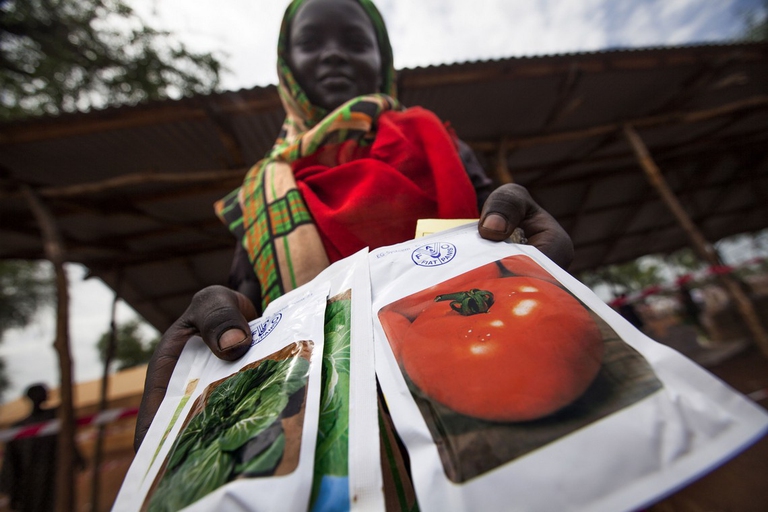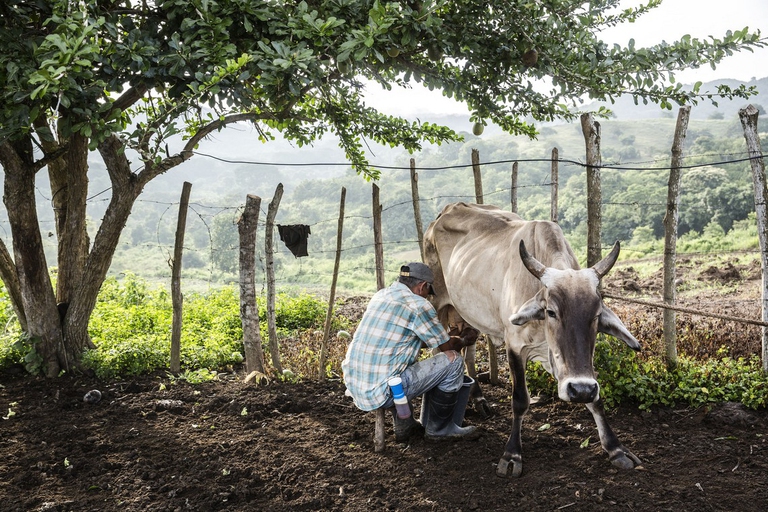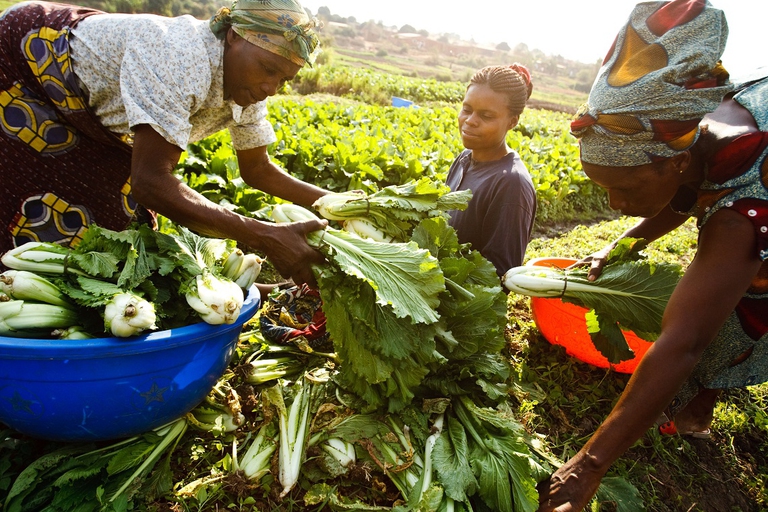
As per tradition after 12 years India held Mahakumbh, the world’s largest spiritual congregation that has been attracting pilgrims from across the globe.
At what point are we in reaching the #ZeroHunger objective by 2030? The FAO photographs the current situation on World Food Day 2018 in this year’s State of Food and Agriculture report.
Feeding oneself is an ancestral need of all human beings, yet millions of people can’t fulfil this primary necessity. 820 million people suffered from hunger in 2017, creating more victims than AIDS and tuberculosis. Of these, 70 per cent live in rural areas and work in agriculture, while 45 per cent of infant deaths is caused by malnutrition. The paradox, therefore, is that a ninth of the world’s population can’t feed itself adequately, even though we produce enough food for everyone.
For this reason, the theme chosen by the United Nations’ Food and Agriculture Organisation (FAO) for the 2018 edition of World Food Day is: “Our actions are our future. A zero hunger world by 2030 is possible”. Events are taking place in 150 countries around the world: marathons, marches, exhibitions and concerts, as well as the principle ceremony in Rome, where the FAO headquarters are, which will see the participation of Queen Letizia of Spain and Letsie III of Lesotho.
821 million people are hungry.
A #ZeroHunger where EVERYONE has enough nutritious food is possible if we choose to act now.
Let’s not waste food
Let’s support our local food producers
Let’s adopt a more healthy and sustainable dietOur actions are our future. #WFD2018 pic.twitter.com/HxkNoxruxn
— FAO (@FAO) 16 ottobre 2018
World population is relentlessly increasing, whilst the natural resources offered by the planet are running out. The main problem is the unfair distribution of resources: 20 per cent of humanity uses 80 per cent of available resources. Nutrition and food security are two of the main challenges of our time, and are strictly linked to environmental issues. Climate change, rural depopulation, increasing demand for meat, the enormous consumption of animal feed and water, and the pollution caused by animal farming are intensifying ongoing problems.
Read more: Industrial agriculture isn’t feeding the world, only agroecology can
In order to highlight these issues, World Food Day is celebrated on the 16th October. It was established by the FAO in 1979, coinciding with the anniversary of the organisation’s foundation in 1945. The UN agency was created to coordinate world action to contrast hunger and malnutrition in favour of food security and the fight against poverty. An objective that remains extremely relevant considering that the number of people suffering from malnutrition increased from around 804 million in 2016 to nearly 821 million in 2017, according to the FAO.
Of the people who today face the prospect of hunger, 60 per cent are women, whilst 151 million children under five suffer from stunted growth. At the same time, a quarter of the world population (1.9 billion people) is overweight and every year 3.4 million die due to complications related to obesity. Another two factors contribute negatively to this situation: a third of the food produced is wasted, and 6 per cent of greenhouse gases are emitted by food that ends up in landfills.
Read more: As climate change alters agriculture, forest food could be the answer. India’s indigenous Kondhs prove it
Hunger and rural development are strictly connected to migratory flows. This is what emerges from the The State of Food and Agriculture (SOFA 2018) report by the FAO, which photographs the situation, at the same time subverting the debate currently taking place on this theme. Starting from the fact that, as highlighted by Director General José Graziano da Silva, “the objective must be to make migration a choice, not a necessity, and to maximise the positive impacts while minimising the negative ones. In many situations it makes sense to facilitate migration and help prospective migrants overcome the constraints they might face, allowing them to take advantage of the opportunities that migration offers. At the same time, it also means providing attractive alternative opportunities to prospective rural migrants, not least by promoting development in rural areas or in their proximity”.
#Ruralwomen represent half of the agricultural labor force and contribute significantly to food security and nutrition.
Unfortunately, they still face limited access to land, water, credit, technology and information, and barriers in labor markets. We must change this pic.twitter.com/EsdowFhIVU
— José Graziano da Silva (@grazianodasilva) 14 ottobre 2018
A lot of work needs to be done, but for the FAO it’s possible to achieve zero hunger by 2030, the aim set by Goal 2 of the UN’s global Sustainable Development Goals (SDGs). The key is to join forces between countries, sectors and professions so that everyone, wherever they are, has access to a sufficient amount of healthy and nutritious food. More private sector investments are needed in agriculture, as well as social protection programmes for the most vulnerable and more streamlined connections between food producers and urban areas.
Read more: How organic agriculture in Cuba saved its population from hunger
“Zero Hunger moves beyond conflict-resolution and economic growth, taking the long-term approach to build peaceful, inclusive societies,” the FAO points out. “We must adopt a more sustainable lifestyle, work with others, share our knowledge and be willing to help change the world – for the better”. In this scenario, sustainability and technological innovation will play an increasingly crucial role, putting the well-being of the environment and local communities at the centre.
Siamo anche su WhatsApp. Segui il canale ufficiale LifeGate per restare aggiornata, aggiornato sulle ultime notizie e sulle nostre attività.
![]()
Quest'opera è distribuita con Licenza Creative Commons Attribuzione - Non commerciale - Non opere derivate 4.0 Internazionale.
As per tradition after 12 years India held Mahakumbh, the world’s largest spiritual congregation that has been attracting pilgrims from across the globe.
Workers in tea gardens of West Bengal, India, that produces Ctc tea for domestic consumption complain that they have been devoid of basic facilities while political parties make hollow promises during every elections which are never fulfilled.
India is in the middle of the elections, but sadly none of the politicians have uttered a word on man-animal conflict that has been devouring several lives every year.
Manipur, a state in north-east India, is still reeling under the tremors of violence that broke out last year devouring lives and paralyzing the economy.
The government of Tanzania is currently planning to evict more than 80.000 indigenous Maasai people from their ancenstral land
A new UNU-INWEH report on the global bottled water industry reveals the massive scale of this market and the lack of strict quality controls.
Isatou Ceesay founded a social enterprise that is helping to fight plastic pollution and empowering women and young people to gain economic independence.
In 2020, Mihela Hladin made a radical decision that many, in recent times, have probably considered. This is her story, with photos by Matt Audiffret.
The Brazilian government has started evicting illegal gold miners, responsible for the health emergency that has hit the Yanomami people.










